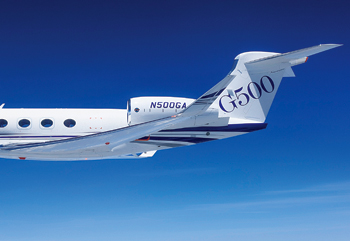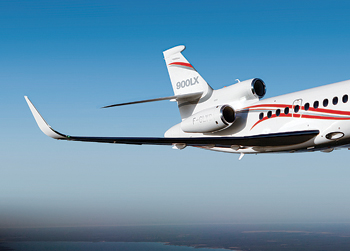INDIAN ARMED FORCES CHIEFS ON
OUR RELENTLESS AND FOCUSED PUBLISHING EFFORTS

SP Guide Publications puts forth a well compiled articulation of issues, pursuits and accomplishments of the Indian Army, over the years

I am confident that SP Guide Publications would continue to inform, inspire and influence.

My compliments to SP Guide Publications for informative and credible reportage on contemporary aerospace issues over the past six decades.
Bizjet Financing Key Modalities
Both outright purchase and a lease can be financed and one needs to decide which one is more suitable to one’s specific needs, taxation regime and creditworthiness

Through almost seven decades of India’s existence as a nation, and through various political dispensations in power at the Centre, the establishment stance on civil aviation has remained somewhat ‘leftist’ inasmuch as civil aviation is viewed as a luxury and thus ‘capitalist’ by association. Business entities, however, have comprehended the potential contribution of business aviation as an efficacious, time-saving hand maiden, to be used to serve business interests.
In India, despite an antipathetic regulatory and taxation regime, business jets are steadily but slowly gaining approbation, but have to be imported as there is no business jet being produced indigenously. Business jets are expensive objects to acquire and Indian import duties on aircraft (customs, countervailing duty, special additional duty and cess) remain near extortionate at more than a fifth of an aircraft’s cost, if the import is for business or private purposes. Consequently, financing an acquisition, especially if there is an option that compares favourably with an outright purchase, using company or private funds, becomes alluring. In some cases, it might even be inescapable for a business house needing a jet. The eighth annual Boeing Current Aircraft Finance Market Outlook, released earlier this year forecasts access to efficient funding at attractive pricing throughout 2016 as new participants enter the aircraft financing industry and current participants innovate and provide more options. This article looks at the modalities of business jet financing.
Decision to Purchase Business Jet


The basic question that a business entity has to ask itself before it embarks on a jet purchase mission is: What do I need the jet for? If the prospective buyer gets the answer right, his application of criteria and the consequent financing decision would turn out to be a profitable one. Alternatively, deep disappointment could reward the wrong answer. The operational questions that help make a decision are: What is the average length of a trip? Are travel legs short or long? How many passengers typically travel on a leg? What is the premium on time? The generally accepted categories into which business jets get shared out, are heavy jets, large jets, super-midsize jets, mid-size jets, light jets and very light jets (VLJs). In general, aircraft with longer range tend to be bigger and thus carry more passengers, but are more expensive to fly. Conversely, the small aircraft can carry fewer passengers and have shorter range due to lower fuel capacity. Obviously, the finance required would vary with size of the jet. Occasionally, financing decision may overrule the operational criteria if finance for the larger jet is unaffordable or unavailable.
Yet another factor peculiar to India is the modality of import. A business house can acquire the aircraft in its own name or obtain a non-scheduled operator permit (NSOP) for the purchase. This decision directly affects financing decision and cost. In 2007, the government decided to introduce an excessive customs tariff, over 20 per cent, on import of aircraft for business or private use while keeping the tariff to around three per cent for NSOP holders. Over the next few months, there was a flurry of activity by some business houses to obtain NSOP to cover aircraft acquisitions for business use thus providing enormous customs tariff relief on imported aircraft. There have been cases of a business house financing an aircraft which was formally imported by an NSOP holder and all flying benefits were enjoyed by the financing entity. While there was an attempt by the government to undo this subterfuge, nothing came of its endeavours as the perpetrators had broken no letter of the law while certainly cocking a snook at its spirit. Despite the frailty of this tariff regime and constant clamour from business aviation entities, the differential continues and is a factor affecting business jet financing decision.
Business Jet Acquisition Options
Once a business jet need is identified, the next step is to decide the mode of use. If the annual utilisation of the aircraft is under 50 hours, one could rely on a company chartering aircraft, thus avoiding considerable financial investment on acquisition. However, if the usage envisaged is high, one could look at outright purchase, fractional ownership or leasing options. Fractional ownership is considered an attractive option in the US and Europe if annual flying is 50 to 100 hours. However, in the Indian context, that is a non-starter at the moment (more on that later). Leasing can be wet or dry; the former is akin to charter inasmuch as the lessor owns the aircraft, crew, maintenance and insurance, etc. while the lessee pays per hour as also for fuel, airport fees, duties and taxes. In a dry lease arrangement, the lessor provides the aircraft and the lessee pays all costs. In the Indian scenario, an annual flying requirement of 300 to 400 hours would justify acquisition as against other options.
Both outright purchase and a lease can be financed and one needs to decide which one is more suitable to one’s specific needs, taxation regime and creditworthiness. Purchase has the benefit of sale proceeds at some time in future and tax benefits in terms of depreciation. On the flip side, it ties up capital and there is always an element of uncertainty about resale value which may be subject to economic conditions. Leasing an aircraft has some advantages over an outright purchase as the initial payment is low, and on expiry of lease, the lessee has the option to renew, renegotiate or just withdraw from the lease agreement and exercise another option.
Financing Options
Financing a business jet acquisition through a loan involves borrowing money from banks or other lenders and typically includes a loan agreement, promissory note and security agreement. Together these three components outline the terms of the loan, the interest rate, commitment to repay capital with interest, and a grant to the lender of a security interest in the aircraft.
On the other hand, a financial arrangement for lease could take the form of an operating lease, a financing lease and a synthetic lease. The most popular leasing arrangement is the operating lease, in which the lessee acquires possession of the aircraft for the leasing period, while the lessor remains its actual owner. The financing lease includes an option for the lessee to own the aircraft outright at the end of the lease period, assuming all payments are made. The financing lease basically becomes a purchase instalment agreement. The synthetic agreement incorporates elements of both these leasing types, in that it is fundamentally an operating lease, but is structured so as to be considered an expense on the income statement, rather than a liability on the balance sheet.
Once the aircraft have been shortlisted, the next step is to identify a financial institution. The overwhelming preoccupation of such an institution is the creditworthiness of the borrower, while that of the borrower is getting the best deal. The financing institution would carry out due diligence on the buyer entity, the aircraft, its technical appraisal, the underlying purchase deal, tax returns, financial statements and purchase agreement, amongst other documents. Occasionally, existing relationships with a bank or a financial institution may guide the decision on financing solution. In any case, obtaining several quotes in confidence from institutions would give the borrower the satisfaction of wide choice. Unless the business jet buyer is a large entity with a legal department retaining an aviation transaction expert, it would be prudent to hire the services of one to scrutinise the financing documents.
Fractional Ownership
In its fundamental form, fractional ownership means more than one entity owning an aircraft in equal or unequal shares. However, fractional ownership is an improvement on the shared ownership model, as by separating physical aircraft ownership from aircraft availability, it puts an aircraft at the disposal of every fractional owner. Nonetheless, the owners enjoy the benefits of ownership including tax benefits of depreciation. Thus from a financing point of view, it sounds very attractive. US-based Executive Jet started a fractional ownership programme — Net Jets — which is perhaps the world’s best known fractional ownership programme. Its success encouraged many to replicate the model in India since 2001; but the Directorate General of Civil Aviation (DGCA) played spoilsport as it was insistent that there should be single ownership, the rationale being DGCA’s obsession with a single accountable entity. The nearest India has come to the fractional ownership model is Forum I which was formed in 2005 by seven like-minded business houses arranging finance for one jet and one turboprop. However, as fractional ownership was not an option, they formed an entity called Forum I which obtained an NSOP and met their business requirements and undertook charters to utilise spare flying capacity. The model continues till today but DGCA appears to be coming around to an acceptance of the fractional ownership model. According to Captain Arun Sharma, Managing Director, Aviators Air Rescue, “The only residual problem that awaits a resolution is the rationalisation of taxation with regard to depreciation benefits to multiple owners in a fractional ownership model”. Should fractional ownership be permitted, the finance burden of expensive jets may become easier through sharing with other customers.
Conclusion
According to Simon Davies, Vice President, Sales India, Global Jet Capital, “Demand for business aviation is closely correlated to economic growth so we believe in the long-term. India will see a significant increase in demand for business jets. This is already a very attractive market for us, and we expect it to become even more appealing in the coming years.” According to their research, Indian business aircraft fleet has a greater proportion of midsized to heavy jets than the average – 44 per cent of the Indian fleet is classed as midsized to heavy, compared with a worldwide figure of 31 per cent, indicating that demand for finance from Indian buyers is likely to be greater than from other regions. While business jet prices start from $5 million, midsize to heavy business jets cost between $25 million and $75 million. Around 80 per cent of business jets were acquired using external financing. As can be imagined, the 20 per cent duty on import would have been a deep dent in the buyers’ pockets as also a cause for enormous angst. In 2013, the Ministry of Civil Aviation proposed a uniform import duty on private aircraft irrespective of whether it was to be used for private or unscheduled commercial operations. It wrote to the Ministry of Finance that the then prevailing import duties (19 to 21 per cent for aircraft imported for personal use and 2.5 to 3 per cent for those imported for commercial operations), be removed in favour of a uniform levy for aircraft imported under both categories and the new duty rate be pegged between the two prevailing rates. This meant that business jet imports for private and business purposes would have become cheaper while non-scheduled commercial operations would become more expensive. However, status quo prevails imposing a huge financial burden to business entities wanting to procure business jets while DGCA is lumped with the near impossible ask of policing whether a business jet imported on an NSOP is being used for purely commercial purposes. If business jet sales are to take-off, the huge burden of import duties would have to be reduced to the levels prevalent for aircraft imported under NSOP. The other impetus to business jet acquisitions could be provided by permitting fractional ownership.





